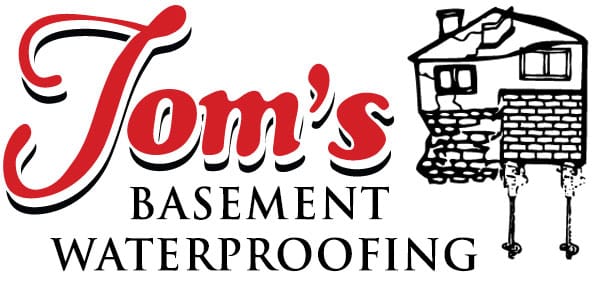Whether you frequent your basement or if it is relatively untouched storage in your home, it can be easy to miss the warning signs that you may need waterproofing or foundation repairs. However, it is imperative to keep a vigilant watch and remember these tips next time you take a look in your basement.
Early Warning Signs of Basement Waterproofing Issues
There are several ways that you can tell if your basement needs waterproofing before things get too bad. The most apparent sign is water stains on the walls or floor, which discolor and leave streaks. In finished basements, water damage may bruise or warp the baseboards or drywall. In times of heavy rain or melting snow, you may also notice standing water in the basement that seems to come from no discernable location, meaning that water is coming through the porous surfaces of your foundation and making its way into your home. Finally, calcification, similar to the buildup of hard water stains in a shower or sink, can form around cracks and obscure more obvious signs of water damage.
Later Symptoms of Water Infiltration in Your Basement
After you notice water has intruded into your basement, the following may occur in various amounts. However, it is essential to remember that the signs you see are likely only a fraction of the extent of damage and signs of water damage.
- Mold Growth: Mold growth is the most dangerous symptom to your physical health. Mold thrives in dark, damp, and cool spaces, making your basement the perfect environment to spread its spores, which you can potentially breathe in and cause lung damage or other respiratory issues.
- Wall Efflorescence: Efflorescence is a white powdery substance formed on the wall surface due to water intrusion and can look like chalk or calcium buildup.
- Damp Or Musty Odors: When you come home from being out, if your home has a musty smell, the scent can be from odors being trapped in the foundation, walls, and wooden supports of your basement.
- Foundation Cracks: Foundation cracks are an advanced stage of water damage, with horizontal cracking being the most concerning as it can cause permanent damage to the foundation if not treated promptly.
You can assess the issues yourself by checking the foundation for damage and the presence of mold and noting where water discoloration is focused.
Preventative Measures to Protect Your Basement And Your Home
Depending upon your skills, there are a few preventative measures that you can take to slow the spread or stop water intrusion outright. First, clean up standing water immediately and look for the source. Don’t allow water to sit or drip if you can stop it; the longer it stands, the more damage it will cause. Always check your basement for standing water or signs of wear after any heavy rainstorm. If your basement is flooding due to poor sealing or pipe damage, it can be temporarily fixed by adding some sealant to smaller damaged areas. Furthermore, clean all drains regularly and check your HVAC system for damage or dust buildup on the coils if possible.
When To Call The Basement Waterproofing Pros
Basement waterproofing is no small undertaking; trying to do it yourself can cause further damage. If you notice horizontal cracking, raised foundations or can’t stop the intrusion of standing water, it may be time to call a professional for an inspection and basement waterproofing plan. The pros at Tom’s Basement Waterproofing can help. Our team of experts are here to provide you with the best possible service without upselling you on the things you don’t need. Contact us online through our email form or call (586) 776-7270 to schedule your consultation and inspection today!

